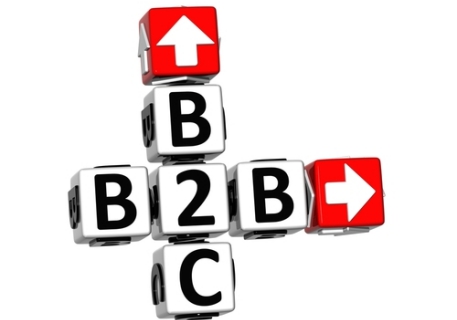Amazon, Meet B2B: How The Internet Giant Is Adapting

Earlier this week, Amazon announced that it was going to begin managing subscription payments, which will allow the online marketplace provider’s active users with stored credit cards on its site to pay for phone, digital music and other monthly subscriptions. But what exactly does this have to do with B2B commerce?
The answer to that question is simple: More than you might think.
Last month, PYMNTS.com discussed how AmazonSupply – Amazon’s e-commerce site – is exploring the wholesale and distribution market. CEO Jeff Bezos historically has not said much on the topic, and only referred to AmazonSupply as “an incredible category” during his company’s annual meeting in 2012.
However, B2B e-commerce could soon be more than just an incredible category. Just look at what happened earlier this year with Procserve, the UK B2B commerce network. The organization launched the world’s first B2B e-commerce instance of Amazon. According to a company press release, the innovation gives businesses all the benefits of buying from Amazon. This is all done while using already existing corporate procurement systems and processes.
“We have strong demand for appropriate corporate access to Amazon from our customers and, working closely with Amazon, we have been able to make this a reality,” Procserve CEO Nigel Clifford explained in a statement. “We believe combining our easy to use B2B eMarketplace with Amazon’s world leading content creates the biggest opportunity for change in corporate procurement behaviors in decades.”
Amazon And Online Payments
The new Amazon addition within the Login and Pay with Amazon features supports automatic payments of fixed or variable amounts. Amazon sees automatic payments helping businesses that rely on subscription-based or recurring payments to generate revenue via the Web or online, according to a company statement supplied to PYMNTS.com.
Ting, a fledgling mobile carrier and mobile-product provider, was the first company to use the service and experienced “pretty impressive results” in the first few months it tested the service, including high conversion rates – customers choosing to use Amazon over other payment methods, Amazon said. Product manager Justen Burdette said in a Reuters interview arranged that consumers who used the service spent 30 percent more on Ting’s website.
“This opens up Login and Pay with Amazon to other types of subscription-based business models, companies who want to make Amazon customers their customers, back payments with the A to Z guarantee and use transparent and low-payment processing,” Amazon said in its statement. “In fact, start-up PeachDish.com is now using the service as their only payment method.”
Consumers pay no additional fees to use the new feature, the company tells PYMNTS.com.
According to Amazon, customers can establish a payment relationship with a merchant in as few as three taps, and there is no need to fill out long forms or enter payment credentials. Once customers set up automatic payments, they don’t have to worry about payment deadlines or forgetting to pay a bill.
Amazon customers also can track payments, view authorized billing relationships and manage them on the Amazon Payments website. They can edit payment information for the merchants they have authorized, and they benefit by avoiding multiple website visits to manage several active recurring purchases.
When customers update an expired card with Amazon.com, the update applies to their payments to merchants as well. “From a customer perspective, it removes the hassle of updating payment information across multiple websites,” Amazon said.
The purported June 18 unveiling of a smartphone also could aid in Amazon’s role in mobile payments. “It’s pretty clear to me that Amazon had to launch a service like this in advance of their phone announcement in two weeks,” Matt Witheiler, general partner at Flybridge Capital Partners, tells PYMNTS.com. “They are going to have to offer a way for consumers to pay for apps that are not Amazon-developed, a number of which may be subscription-based, and this payment service is a perfect way to solve this.”
Also, both payment networks and retailers in the not-too-distant future likely will authenticate customers using their mobile devices in both online and in-person commerce, and access card data via the cloud. Amazon could be preparing for that scenario, especially if it proceeds with launching its own phone, where simpler checkout will be a necessity, suggests Dan Rosen, general partner at Commerce Ventures.
“That’s a huge thing in mobile commerce and will required for the next stage of commerce growth through the phone,” he said. “There really aren’t many examples of a service like this where you have payment credentials on file and easy authentication and checkout without entering really any other information.”
Is B2B Commerce In Amazon’s Future?
The likely answer is yes, if Bezos’ hints at the possibility are any indication. Additionally, by looking at how the online marketplace is making mobile payments easier for individual consumers, it seems to make sense that B2B options are not far behind.
AmazonSupply is probably just the beginning of an interesting story that businesses across all sectors will want to know how it ends.
